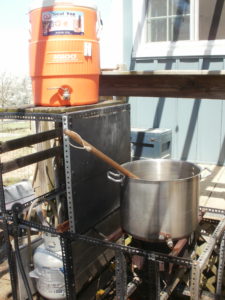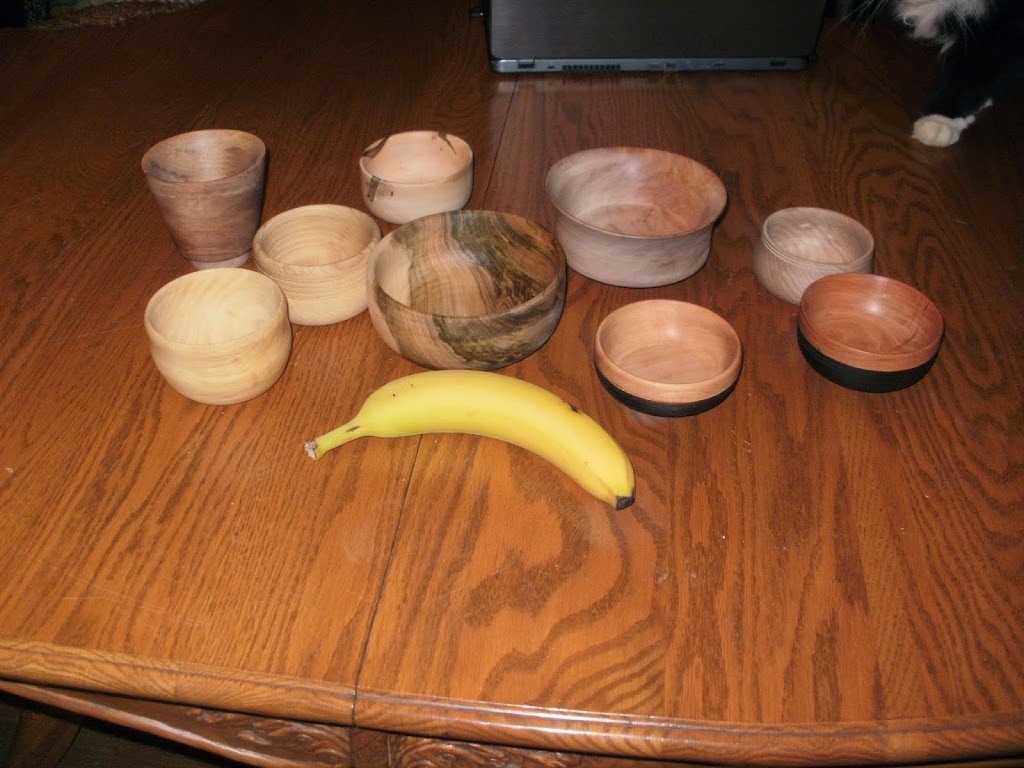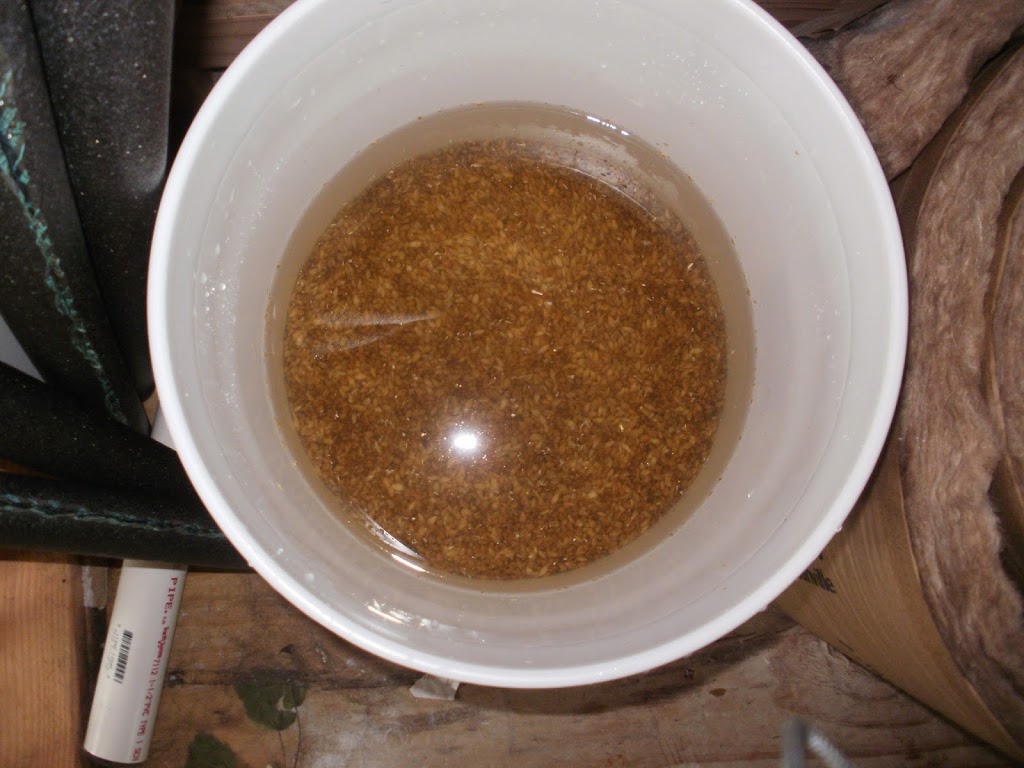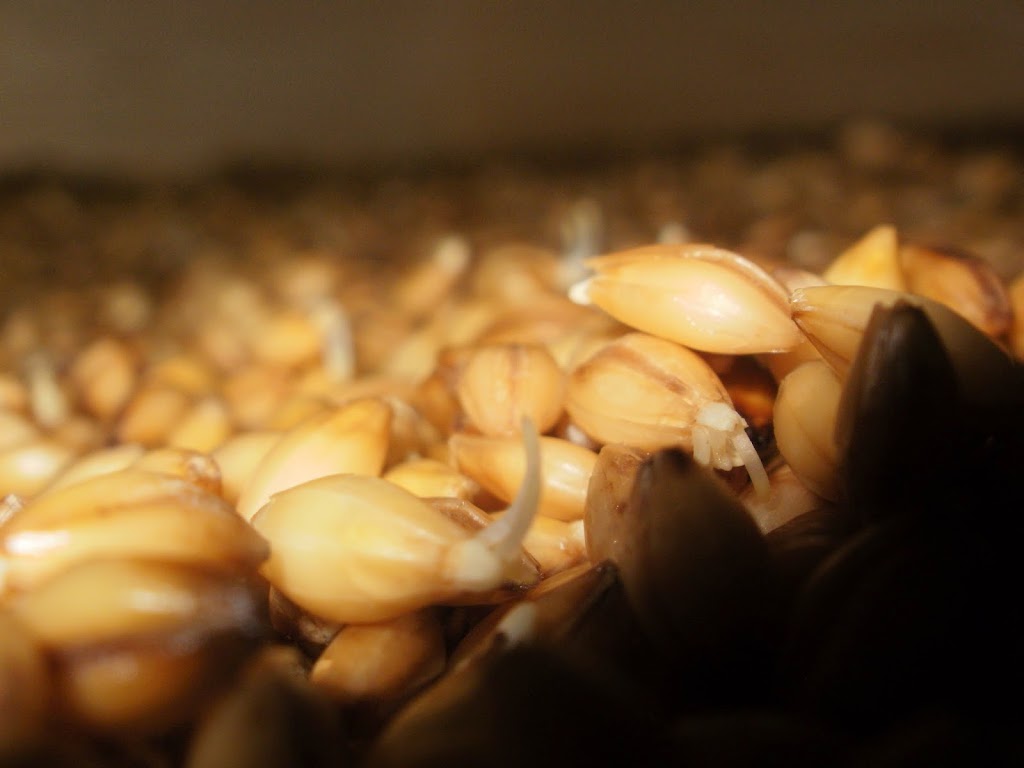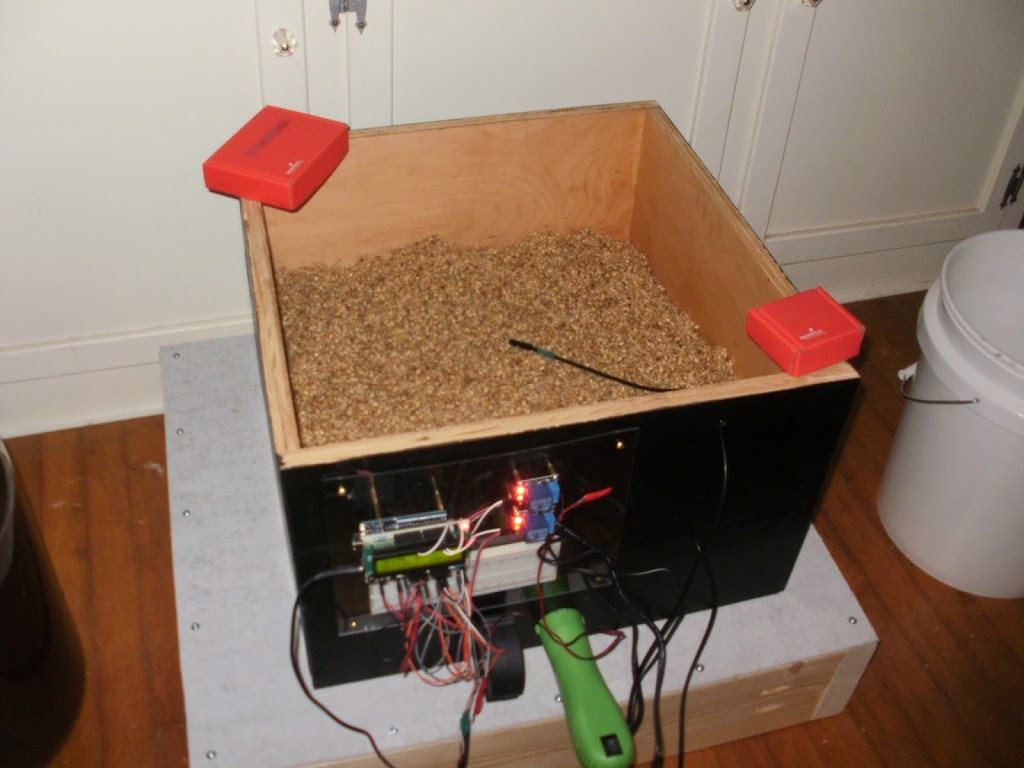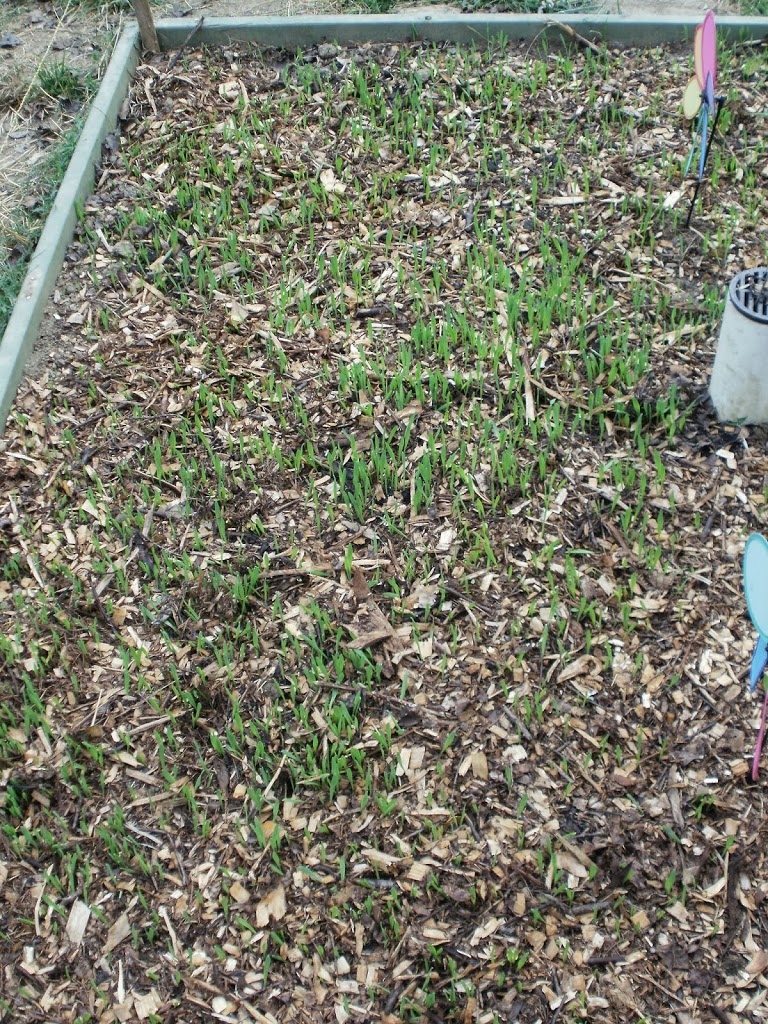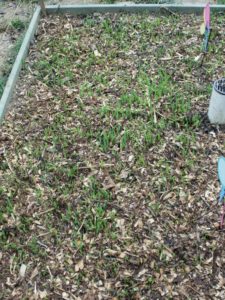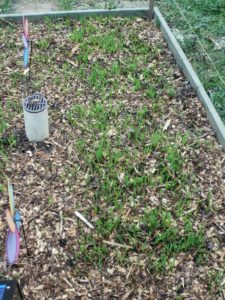In trying to track down my “Holy Grail” of a pre-1600 Einbecker Bier, I stumbled across a mention of another of my favorite period beers: the Braunschweiger (Brunswick) Mumme. This reference was in “Hochtnutzbar und Bewährte Edle Bierbrau-Kunst”, by David Kellner, printed in Leipzig in 1690. While this is a bit post-period for my purposes, I’m confident enough to say that it’s “close enough” for horse-trading. Unlike Einbeck, Brunswick maintained a continuous brewing tradition, which inclines me to think that it was less likely to change significantly. (The brewing of Einbecker Bier moved to Munich after the 30 Years’ War, and there it evolved into today’s Bock.)
Kellner praises Mumme for its “exquisite strength, lovely taste, and thick, brown, beautiful color.” He also describes how it is carried far and wide over land and sea, for which the Braunschweiger brewers have created “Schiff-Mumme,” or Ship-Mumme. For their own usage within the town, they have a version called “Stadt-Mumme,” or City-Mumme; lastly, they make “Erndtbier,” or Harvest Beer, to sell to the peasants at harvest-time.
The description of what goes in to the various Brunswick Mummes is as follows:
Take two Braunschweiger wispels of quite well-washed and dried barley-malt, together with sufficient water for , and cook it for five quarters of an hour, scoop it into a vat and let it stand a little, then again it goes into the pan (but only the broth, without the malt), and once again for three hours with 15 himpen of good Country-Hops therein cook well. After this they cool in a vat, and allow them to be fermented adequately before they place it in barrels and bring it into the cellar, which afterwards, when it has sufficiently fermented and separated from the yeast, it will be tapped in the cellar and sent away. From this they receive commonly four half-barrels of Mumme.
The common City-Mumme, to be drunk quickly, take the same amount barley-malt, only 4 himpen of hops, and proceed as with the previous one. But if it is supposed to lie long, take 10 maß of hops to it, and put the brew in seven barrels.
For their Harvest-Beer they take two wispels of barley malt, 12 maß of hops, cook them with enough water for nine barrels of beer, in the same way as before, and clear it up, then they seal up the barrels, and sell it to the peasants at harvest-time.
First, let’s do an analysis of the brewing technique. It’s obviously different than the Berliner Beer process I’ve documented, particularly in that it assumes pre-malted grain. Judging from the above, I would guess that the “five quarters of an hour” portion is the mash, and it takes that long to bring everything up to temp, running it up from room temperature. It would obviously go through each stage of the various rests–liquiefaction, acid, protein, et cetera. I would have to run experiments (or dig up information on specific mass and heat absorption) to see if they’d get up to a good mashing temp in that amount of time.
Once they’ve got their “cooked mash,” they let it sit for a while, probably finishing whatever conversion is going to happen, before returning the liquid to the kettle. They then perform a three hour boil. I shudder to imagine how much fuel that must have taken. After the boil, they cool the wort, then perform what appears to be an open fermentation, before casking the beer.
One point of interest to me is that they’re using the same grain bill for these beers, “adjusting” them by varying the hopping rate and the output volume. It’s not especially significant, other than to note that modern homebrewers go the opposite route: we aim for a consistent output volume (typically 5 gallons), and adjust the grain bill and hops to meet that.
Another point to make here is that this helps dispel the notion of “brewing being mostly done in the home, for personal use.” They would need two vessels large enough to hold over a ton of sodden grain, plus the additional mash liquid. I’ve heard of ways cities got around this (which I will put in a different post), but this is obviously not “homebrewing” in any real sense of the word.
That being said, the next thing to do is to get the measurements into something usable to us. For definitions of the different measures, and for lack of something better at the moment, I’m using the Vollstaendiges Handbuch der Muenzen, Maße und Gewichte aller Länder der Erde, by Johann F. Krüger, which dates from 1803 (Google Books edition). Here’s what we’ve got:
- 1 Braunschweiger Wispel is 329.1 gallons
- 1 Himpen is 1/40 of a Wispel, or 8.23 gallons
- 1 Fass, or barrel, of Mumme is 95.95 gallons (for the curious, 1 Fass of Bier is 103.62 gallons; I’m not sure why the difference)
Those are, where available, the Brunswick measurements (as for the Wispel). Failing that, I’m using the Saxony versions, unless I can reason my way into something different. The Duchy of Brunswick/Braunschweig was part of the Kingdom of Saxony, when it wasn’t independent–but that’s more history than I want to go into here. (Maybe I’ll go over it a bit in its own post, some day.)
From my own empirical observations, I get about 3.3 pounds of barley malt per gallon. The hops are problematic, as we don’t know for sure how they were packed. Are they using hop bales? “Trod” hop pockets/sacks (as used in Victorian England)? Loose hops? I’m going to assume some form of tightly packed (bales or pockets), and use that as an upper bound. Two sources (Stewart and Priest’s Handbook of Brewing, and Hornsey’s Brewing) give me bale and pocket volumes and weights of .83 to 1.25 pounds per gallon and 1.02 pounds per gallon, respectively. So, roughly 1 pound per gallon should work as a rough maximum.
Then there’s the water. “Enough” water can be difficult to estimate, but with a brewing calculator, we’ve got the information to figure it all out. I don’t have an analysis of medieval Brunswick water available to me, but it was likely well-water, and probably of moderate hardness. This would tend to promote somewhat darker beers than otherwise.
Anyway, if we plug in the numbers, the raw recipes look something like this:
Schiff-Mumme
2172.06 pounds of barley malt
123.45 pounds of hops
Final volume 191.9 gallonsStadt-Mumme
2172.06 pounds of malt
32.92 pounds of hops, plus 2.64 pounds for dry-hopping
Final volume 671.65 gallonsErndte-Bier
2172.06 pounds of malt
3 pounds of hops
Final volume 863.55 gallons
Those are some big beers! My calculations tell me that the Schiff-Mumme would need something north of 285 gallons pre-boil, and significantly more than that for the mash (considering the grain will absorb some). It also gives me an OG of 1.288, assuming 70% efficiency–which is likely optimistic. IBUs would depend largely on the hops being used; assuming something with about 3% AA, you’re looking at about 79-80 IBUs. If they were using stronger hops, it would quickly bump up towards the (theoretical) 100 IBU maximum, but given that OG, you’d need some hefty bittering to balance it! The color, even if you assume something on the order of a modern Pale Ale malt, comes out roughly 20 SRM, which looks like a nice brown, darker than a Newcastle, say, but not as dark as a Dunkel.
The Stadt-Mumme needs about a thousand gallons of wort pre-boil. I’m seeing an OG of 1.078, with 40-ish IBUs. The color is significantly lighter, coming in at about 5 SRM, using Pale Ale malt. And the Erndte-Bier needs 1285 gallons of wort pre-boil, clocks in at about 1.050, 8-9 IBUs, and about 4 SRM, or the same color as the Pale Ale malt.
But, as I mentioned, no homebrewer these days has the equipment to mash a ton of grain at a time. (If you do–please contact me; I’d like to talk.) So, to make it work, we have to scale things down. Here’s what I come up with, to make 5 gallon batches of each:
Schiff-Mumme
56.47 pounds of grain
3.2 pounds of hops
Mash with 36 quarts of waterStadt-Mumme
16.07 pounds of grain
3.9 ounces of hops, plus .3 ounces for dry-hop
Mash with 37 quarts of waterErndte-Bier
12.6 pounds of grain
.25 ounces of hops
Mash with 38 quarts of water
I’m not sure the average homebrewer would be able to brew up a Brunswick Schiff-Mumme on typical equipment. Not all-grain, certainly; although the adventurous could probably come up with a usable extract recipe. The Stadt-Mumme looks like a hoppy Oktoberfest, in just about everything except color. Playing with the grain bill, to move it away from just the base malt, would make for a really tasty beer. And the Erndte-Bier, well–it looks okay, if a bit strong, for quenching the thirst and providing some extra calories on a long workday outside.
In all of this, I’ve avoided mentioning what yeast is used. I haven’t seen any useful analyses that would point in one direction or another, and certainly no actual cultures from the time. I’d go with something German, or at least Continental, if possible; if it had a good alcohol tolerance, so much the better. The Schiff-Mumme, after all, is strong enough that even a Champagne yeast would have a hard time drying it out. An Alt yeast might work for the other two, but really, you should experiment and decide what you like best. I can imagine a California Ale/Chico/1056 batch of Stadt-Mumme being tasty, with the right hops.
I hope this has inspired you to brew a batch of Brunswick Beer! If you try any of these recipes, please let me know, either via email or in the comments!

